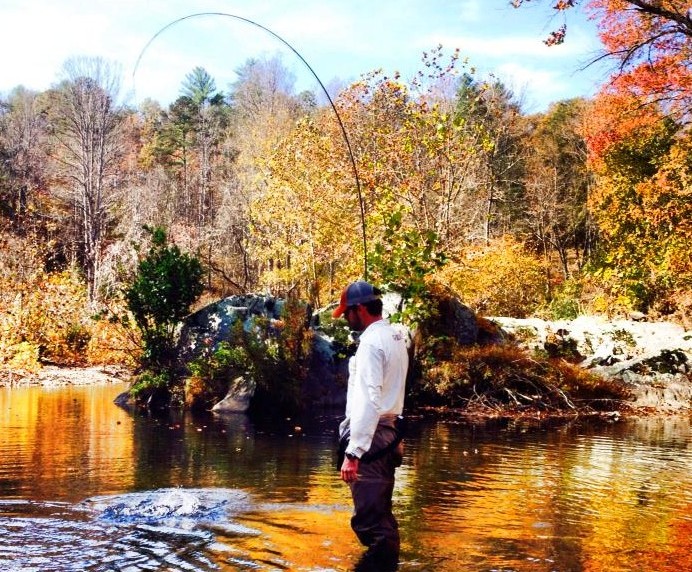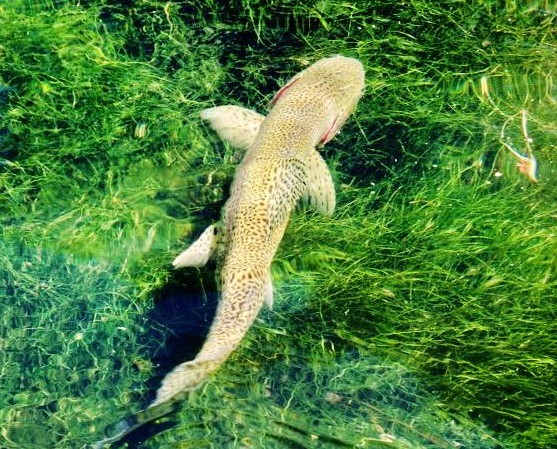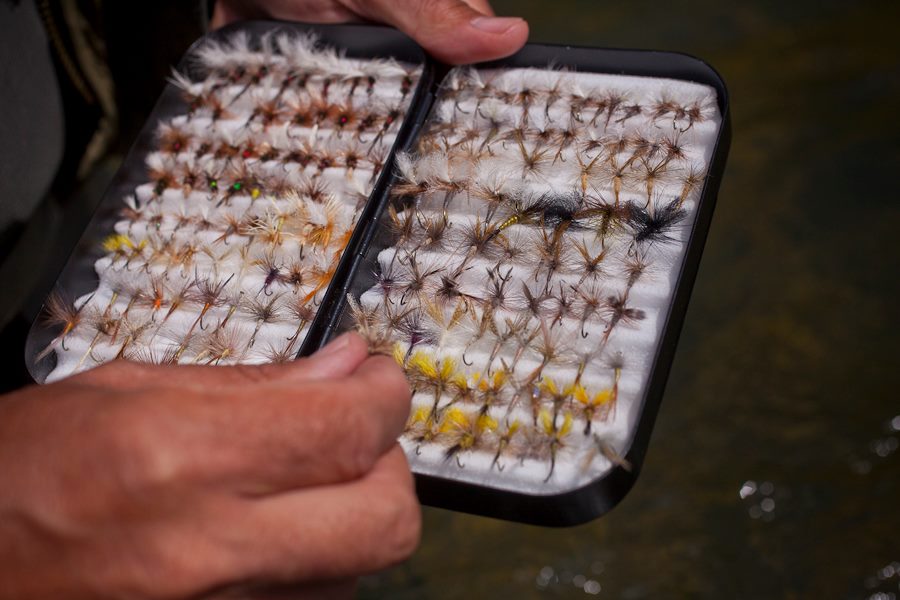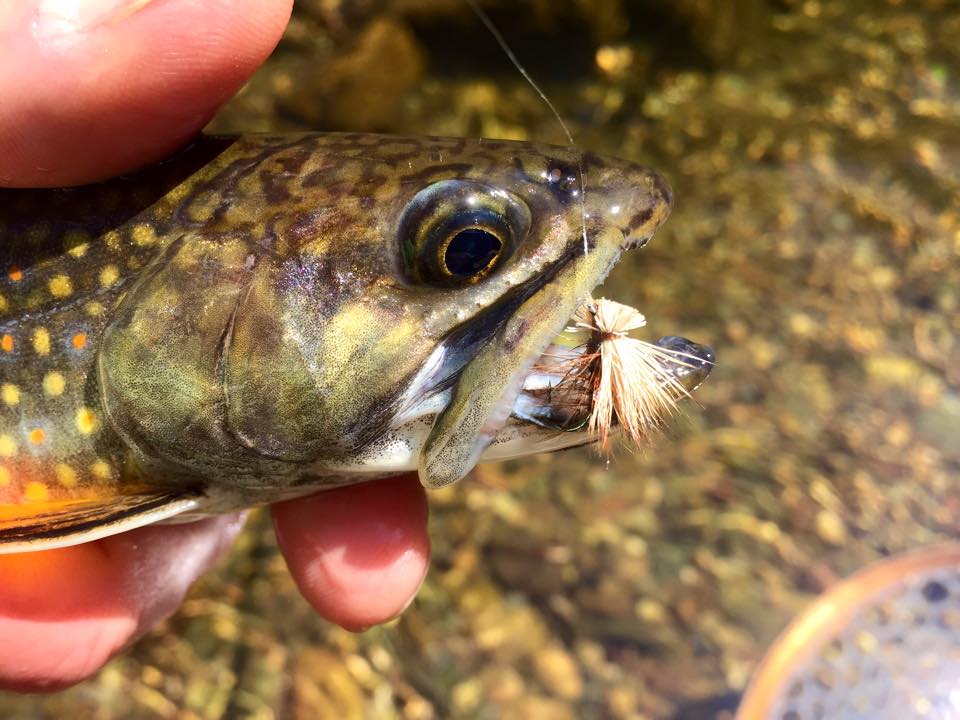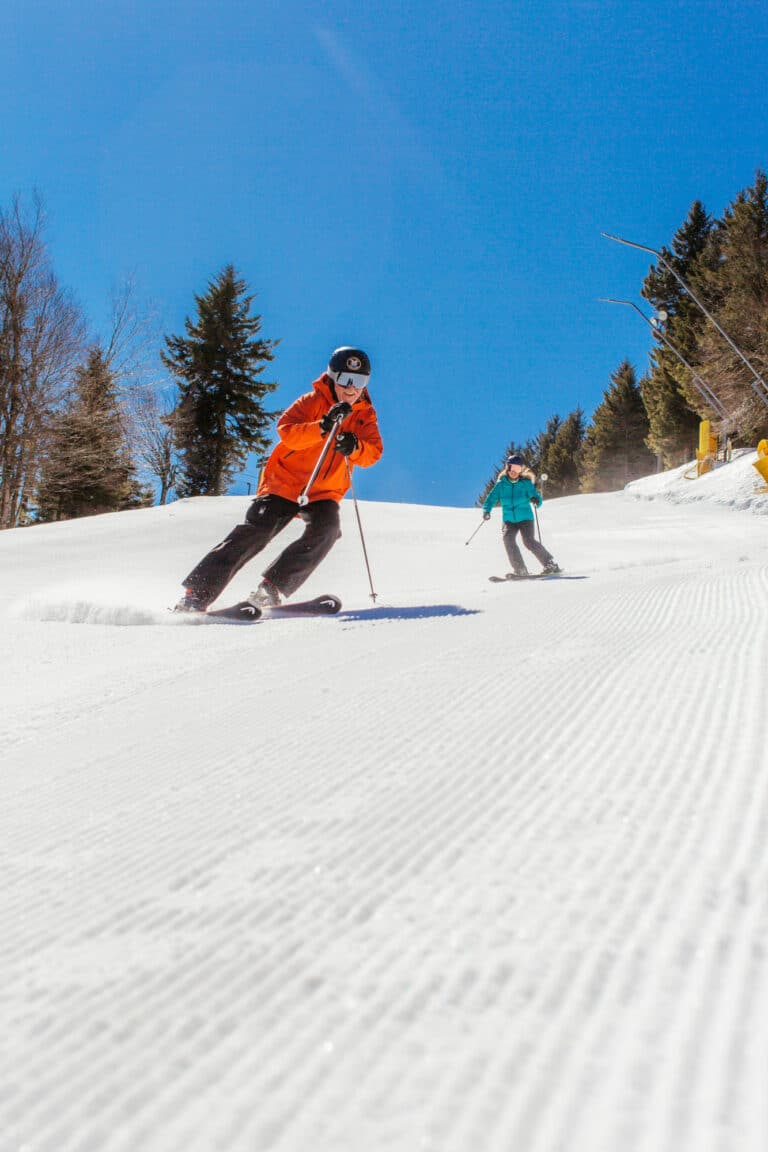It seems to be a common misconception that fly fishing for trout is overly complicated, and there are elements that lend themselves to complexity—like the diversity of a trout’s diet for instance, which has several layers pertaining to insect life cycles and a fish’s feeding behaviors.
All of this can be overwhelming to a novice angler, but if you pay close attention to your surroundings, and learn to spot feeding fish, you’ll be pleasantly surprised with the outcome.
The first thing I do when I approach a particular pool or trout lie is stop and watch. If I see fish rising to the surface and their noses breaking the water with perceptible insect activity in the air, I can assume that they are probably feeding on the mature form of a particular insect, rather than nymphs which live beneath the surface.
Photos Courtesy of Albemarle Angler
The fly I would use to match this would float high and dry on the surface, and with a good drag free drift, hopefully be eaten. If I drift this dry fly over their heads and they refuse it, I would first downsize my tippet then the size of my fly.
Say for instance these fish are bulging at the surface but not necessarily breaking it with their heads. Maybe there are a few insects flying around or crawling on rocks but not swarming.
These trout are probably feeding on insects emerging through the water column on their way to adulthood. This intermediate stage of an insects’ life cycle can often be tough for the untrained eye to decipher. But, if the trout are active and feeding high in the water column but not pushing their noses out of the water, give an emerger pattern or soft hackle fly a try.
Finally, since a trout’s diet is around 90% subsurface, fishing nymphs and larva flies will generally be a safe bet. If you approach the stream and don’t see much activity from fish or insect they are probably feeding on nymphs.
As the water flows it dislodges rocks covered by tons of nymphs close to the bottom of the streambed. Trout will find areas in the current that channel food directly towards their hungry mouths. If you encounter this situation, try tying on a weighted nymph under an indicator or even suspend it under a dry fly to cover two layers in the water column.
In developing your keenness for fly fishing, slow down and smell the wildflowers. Take your time to observe and assess the behavior of your quarry, make your best judgment, tie on a fly, drift it through and fish on!
Scott Osborne is a fly fishing guide at the Albemarle Angler in Charlottesville, Virginia. Check them out on Facebook.
